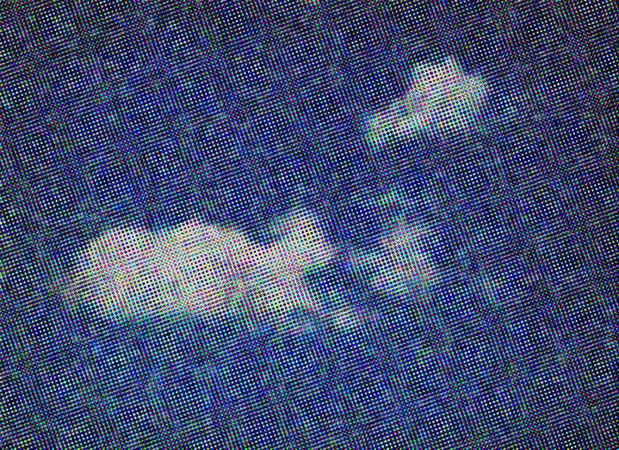Kahlil Robert Irving “Black ICE”
Callicoon Fine Art

This event has ended.
Callicoon Fine Arts presents Black ICE, the second solo exhibition of new works by Kahlil Robert Irving. Irving uses sculpture to communicate both personal and worldly references that touch on themes of loss, the yearning for inner city as sanctuary, and social media as a mode of information transfer and terrorism. Black ICE returns to and expands upon existing ideas Irving explored in his first major institutional solo exhibition at Wesleyan University, where he surveyed representations of the ground, the sky, and constructed artifacts in between.
Black ICE is comprised of sculpture and wall works. Irving takes a new approach to his assemblage sculptures, here constructing them out of hand-pressed ceramic tiles that simulate asphalt. The largest work, [ STREET & Stars | (Memories < > Matter) fair and FREEDOM ] Black ICE, stretches fourteen feet wide, reflecting the surface and dimensionality of the street. The sculpture is presented six inches off the floor and includes embedded trompe l’oeil objects: smashed ceramic Vess soda bottles and flattened to-go boxes, clips of screenshots from social media assembled to resemble newspaper, and broken bricks. Other forms resemble shattered or fragmented historical ceramic vessels, or mounds of cement and sand, all of which are constructed by Irving. The smaller floor piece, WONDER Land of many men, Ro-man, Black and Black, is composed of seemingly simplified units: an arrangement of square tiles framed by rectangle tiles, mimicking an undisturbed section of pavement or a framed twinkling starscape. Both sculptures reference ancient Antioch mosaics from the 3rd Century A.D.. Covering a variety of surfaces such as interior walls and the floors of buildings, these historical fragments are montages illustrating mythological and social narratives, recording the evolution of visual cues and storytelling from Greek to Roman periods. Irving’s tessellations relay narratives over time by way of the references to daily life preserved in the tiles. For Irving, the city street is a rigorous, treacherous place, laden with subtext—these two works consider the daily experience of traversing this terrain in and out of the city.
This exhibition’s title deals with the artist’s experience growing up, traversing the city’s hot tar roads. It also references a hit single by hip-hop group, Goodie Mob, featuring OutKast, called Black Ice (Sky high) (1998). André 3000’s verse draws our attention to what a person can see while walking through the neighborhood: “Yellows and greens and blues and browns/And grey and hues the ooze beneath dilapidated wood.” In the gallery, a composite image of a blue sky with billowy clouds partially frames the space. This image is recurrent in Irving’s installations, an imagescape that touches upon the desire for calm weather and a carefree life. André 3000 explains the difficulty of existing within and being affected by the conditions one may face on the street while being Black: “We’ve all indulged in the bulge of those no-no’s/No, you ain’t solo, there’s even lower levels you can go/Take sun people, put ‘em in a land of snow.” Still, the hook points to an inherent connection between the street and the sky as spaces of reflection and mental freedom that not all are able to achieve: “Touch what I never touched befo’, seen what I never seen befo’/Woke up and seen the sun sky high, sky high.”
Four small wall works memorialize police officer Jason Stockley’s acquittal in 2017 for murdering Anthony Lamar Smith. Irving was prompted to transfer text from the document affirming Stockley’s position when the officer moved to sue the government for a quarter of a million dollars, which was recently dismissed. Irving challenges the language of this court document with this gesture. Often used for decoration, each industrially-produced, commercially-available, white glazed ceramic tile stirs a sense of disorientation and imitates the short quips found on social media. Irving wonders if we can really catch the subtext of this information and the imperfect judicial system, seeking solutions for oppression despite embedded bias. In Black ICE, Irving addresses the evolution of colonialism and the vestiges that exist in this twenty-first century. Together these works allow the present and past to exist simultaneously, emerging from the pressures of the street they represent.
Black ICE is accompanied by an essay written by Jessica Baran, poet and Associate Director of Curatorial & Program Development for Barrett Barrera Projects in Saint Louis, Missouri.
Kahlil Robert Irving (b. 1992, San Diego, CA) is an artist currently living and working in Saint Louis, Missouri. He attended the Sam Fox School of Design and Visual Art, Washington University, St. Louis (MFA, 2017), and the Kansas City Art Institute (BFA, Art History and Ceramics, 2015). In 2017, Callicoon Fine Arts mounted his first solo exhibition in New York titled Streets:Chains:Cocktails. Since then, his work has been exhibited at the Nerman Museum of Contemporary Art, Kansas; the Craft and Folk Art Museum, Los Angeles; the RISD Museum, Rhode Island; and Jenkins Johnson Projects, Brooklyn, among others. Between September and December 2018, Irving had a solo exhibition at Wesleyan University in Connecticut titled Street Matter – Decay & Forever / Golden Age. Irving was a 2018 Artist in Residence at Art Omi and the 2017–18 Alice C. Cole Fellow at Wellesley College, Massachusetts. Recently, Irving was recognized as an awardee of Great Rivers Biennial of the Contemporary Art Museum Saint Louis, presenting a solo exhibition at the Museum in May 2020. His work is in the collections of the Ken Ferguson Teaching Collection at the Kansas City Art Institute, Missouri; J.P Morgan Chase Art Collection, New York; Nerman Museum of Contemporary Art, Kansas; Carnegie Museum of Art, Pittsburgh; Whitney Museum of American Art, New York; and the Riga Porcelain Museum, Latvia. In November 2019 his work will be featured in Making Knowing: Craft in Art, 1950–2019, Whitney Museum, New York.
Media
Schedule
from September 08, 2019 to October 20, 2019
Opening Reception on 2019-09-08 from 18:00 to 20:00